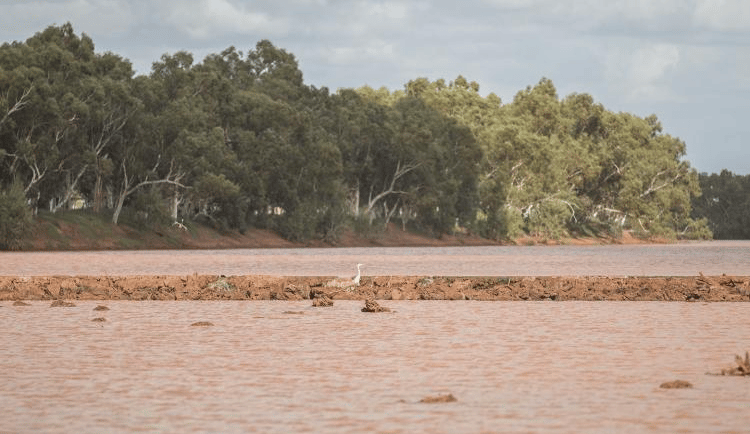Access Denied: Forrest’s Bid to Unlock Minderoo Weirs Documents Rebuffed in WA Court
A recent decision by Western Australia’s Court of Appeal has blocked a Forrest family entity’s attempt to obtain internal documents from the Buurabalayji Thalanyji Aboriginal Corporation in the ongoing weirs dispute at Minderoo Station. The ruling adds complexity to a high-stakes environmental, legal, and Indigenous heritage conflict.


One of the most closely watched disputes over land, water, heritage, and corporate ambition in Western Australia has taken a new turn. The Forrest family’s company recently sought access to internal documents held by the Buurabalayji Thalanyji Aboriginal Corporation (BTAC) in advance of a tribunal hearing on the controversial weirs project at Minderoo Station. That bid has now been quashed by the state’s Court of Appeal, raising legal and strategic stakes for all parties.
The Background: Weirs, Heritage, Litigation
The dispute stretches back years. Forrest & Forrest (a Forrest family entity) proposes to build ten “leaky” weirs across the Ashburton River at Minderoo, intended to improve water retention for pastoral operations. BTAC, as the registered native title body corporate for the Thalanyji people, has opposed the plan, citing significant Aboriginal heritage and spiritual concerns tied to the river and its flows. Previous decisions under the Aboriginal Heritage Act have blocked the project, and the matter is now set for a rehearing in the State Administrative Tribunal beginning 3 November 2025. (Business News)
Earlier, the Tribunal dismissed Forrest & Forrest’s request for unredacted BTAC meeting minutes on grounds of legal professional privilege. The company contended that privilege had been waived. (Business News)
The Court’s Decision and Its Rationale
Forrest & Forrest appealed to the WA Supreme Court, aiming to overturn the Tribunal’s refusal to disclose documents. Their hope: that access to BTAC’s internal deliberations might shift the balance in the upcoming hearing. That appeal was declined at that level and escalated again to the Court of Appeal.
In its judgment, the Court of Appeal refused Forrest & Forrest’s application for leave to appeal. The court reasoned that granting further review would disrupt the procedural schedule, fragment the Tribunal’s hearing, and risk serious delay to the already long-running case. (Business News)
Specifically, the court found it was not in the interests of justice to reopen the issue, noting that even an expedited appeal would be unlikely to resolve before the November hearing begins. (Business News) The court thus preserved the Tribunal’s timetable and the existing protections over BTAC’s privileged material.
The consequence: Forrest & Forrest cannot, for now, compel disclosure of unredacted BTAC minutes or internal documents in relation to the weirs dispute.
What This Means for the Parties
For Forrest & Forrest, this is a setback. Access to internal BTAC deliberations may have helped shape arguments or cross-examination in the Tribunal hearing. Without it, they may need to rely more heavily on publicly available statements, expert testimony, or indirect evidence.
For BTAC and the Thalanyji people, the decision reinforces a boundary around internal decision-making. It also underscores that privilege and confidentiality may remain respected—even under intense public scrutiny and high-value disputes involving heritage, water, and land use.
For the Tribunal process, this ensures procedural integrity and focus. The Court of Appeal’s ruling helps lock in a timeline and reduce tactical filings that might delay the hearing further.
For the broader public and policy observers, this contest speaks to how Indigenous corporations, heritage law, pastoral interests, and corporate actors interact—and how procedural rights and privileges can meaningfully shape outcomes in contested land and water projects.
Key Takeaways and What to Watch
1. Privilege still matters in environmental and heritage disputes
This ruling confirms that internal documents, especially those shielded by legal professional privilege, are not lightly exposed—even in cases with public consequences.
2. Speed and procedural order can trump full disclosure demands
Courts may prioritize preserving hearing schedules and minimizing delay over exhaustive document access requests.
3. The Tribunal becomes the central battleground
With this hurdle cleared, the focus now shifts to the SAT rehearing beginning 3 November. That hearing will grapple with technical, environmental, cultural, and policy arguments grounded in the contested facts. (Business News)
4. Strategic implications for stakeholders
— Forrest & Forrest may lean more on external evidence or engage in narrower contesting of BTAC’s publicly released positions.
— BTAC must maintain firm legal posture while preparing strong heritage, cultural, and environmental defence narratives.
— Government and regulatory actors will observe how legal processes resolve tension between development and Aboriginal heritage protection.
In regional Western Australia, where land, water, and cultural continuity are tightly bound, the legal duel over the Minderoo weirs is far more than a pastoral infrastructure dispute. It is a case study in power, procedural law, heritage, and how Indigenous corporations mediate between private interests and community sovereignty.
At TMFS we pay close attention to these hinge moments—not merely for legal intrigue but for what they reveal about how policy, tradition, corporate vision, and law converge. The November hearing will likely determine whether the weirs project proceeds, but the path to that moment was shaped in part by today’s document ruling.
All rights belong to their respective owners. This article contains references and insights based on publicly available information and sources. We do not claim ownership over any third-party content mentioned.


